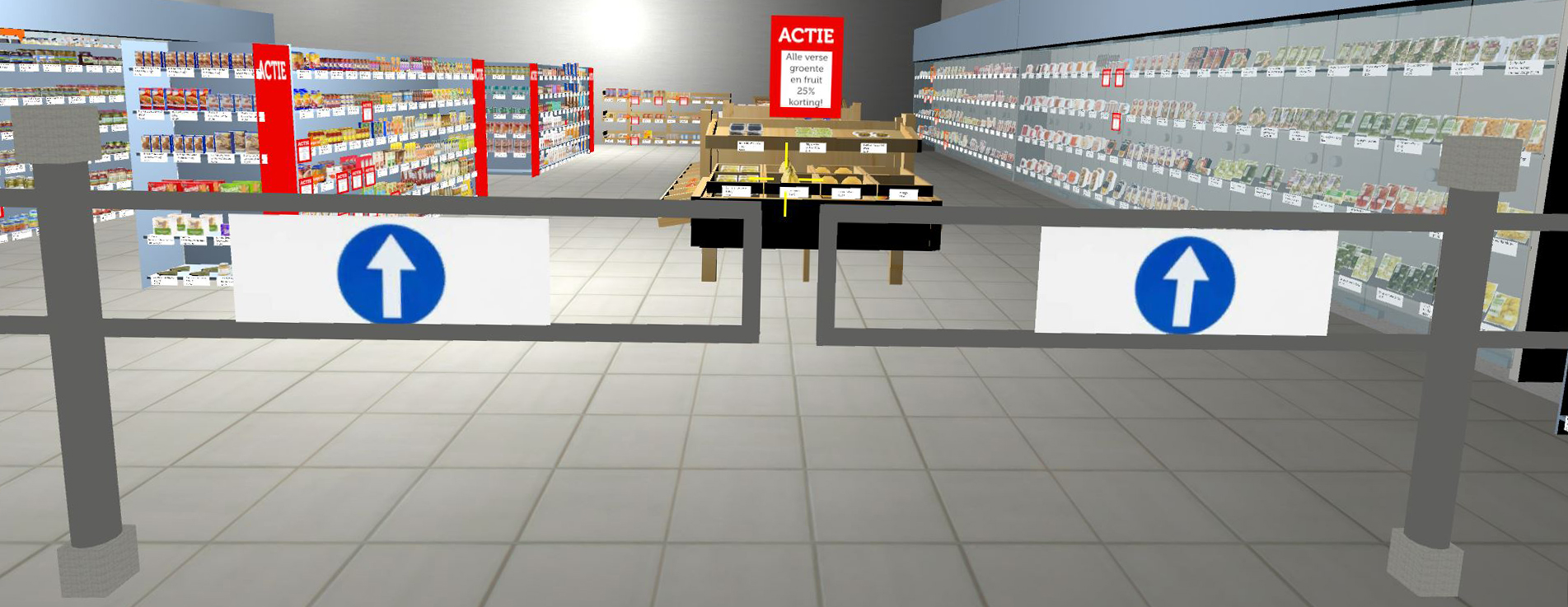
A virtual reality supermarket
The VirtuMart is a line of innovative measuring tools for scientific research in which consumers can go grocery shopping in a 3D digital environment. In VR, users are immersed in a lifelike experience; they feel like they are present in the virtual environment and not in their actual physical environment. There are indications that people in a virtual supermarket show similar (buying) behavior as in a real supermarket. That is why the technology has great potential as a measurement tool for researching purchasing behavior. Knowledge about effective influencing strategies collected with this environment may therefore be applied directly in real supermarkets.
I developed a very first version of the VirtuMart (then still named NeuroShop) in 2015 as part of the NWO Food Brain Cognition project 'Virtue: developing a realistic fMRI-compatible VIRTUal food choice Environment to test the effectiveness and neural underpinnings of healthy eating interventions'. Since then the development branched into different versions for lap/desktops, smartphones, head-mounted displays and more with projects funded by NWO, Diabetesfonds and the Digital Communications Lab (UvA). Below the video an overview of the different VirtuMart applications can be found.
- Non-immersive VirtuMart
This version of the VirtuMart runs on laptop or desktop computers and users navigate through the 3D environment by using the keyboard and mouse/trackpad. Users can click on products to place them in their basket, they can remove them and they can pay at the cash register or via the menu. Close ups of products (front and/or back) can be viewed by clicking on products. Further, it is also possible to give users a predetermined budget for their shopping trip or to provide them with a shopping list. Finally, it is possible to navigate through the supermarket with an avatar viewed from first or third person perspective. All shopping events (e.g., clicking on products, placing them in the basket, amount of money spend) and the position of the user in the VirtuMart is logged. The screen-based VirtuMart can be installed on computers in a lab environment but it can also be downloaded by study participants on their own home computer; in the latter case, the data is sent to a data server. - Immersive VirtuMart
This version of the VirtuMart is used with an HTC Vive head-mounted display and controllers. Users navigate through the 3D environment by physically walking around in the VR arena (The HTC Vive base stations enable an arena of maximally 10 by 10 meters). Longer distances are covered by teleporting. The controllers simulate the users’ hands with which they can pick up products and place them in the shopping basket. Shopping events (picking up products, placing them in the basket) and position are logged. - Mobile VirtuMart Shopping Game
This version of the VirtuMart can be used on an Android phone in conjunction with a cardboard or plastic holder for the phone. It is a gamified VR cognitive bias modification training tool. In each level they are instructed to find a specific product. Users navigate through the VirtuMart by pointing their gaze at a teleportation hub and push the screen (or cardboard/headset button). At random moments in-store adds for healthy or unehalthy products appear in the center or the periphery of the gaze. Similar to traditional attentional modification trainings, these adds have a coloured border which indicates if the user should direct their gaze towards or away from the add. User receive feedback on their performance. - VirtuMart/NeuroShop fMRI paradigm
The NeuroShop fMRI paradigm consists of two applications, namely an environment similar to the non-immersive VirtuMart that participants can freely navigate through with their MRI-compatible joystick (during the T1-scan) and a standardized fMRI task. The purpose of the free navigation in the supermarket is to help participants become embedded in the supermarket environment and involved in the act of grocery shopping. Next, in the standardized task (during the fMRI run), participants are presented with 120 different time-locked choice screens that each display two products: one healthy and one unhealthy product from the same category. Participants indicate their preference on a four point scale ranging from a strong/slight preference for the top product to a light/strong preference for the product on the bottom. Choice trials are interspersed with video clips that show the process of navigating from one shelf to another in the supermarket. The purpose of showing the movie clips in the choice task is to keep embedding in the supermarket environment high.
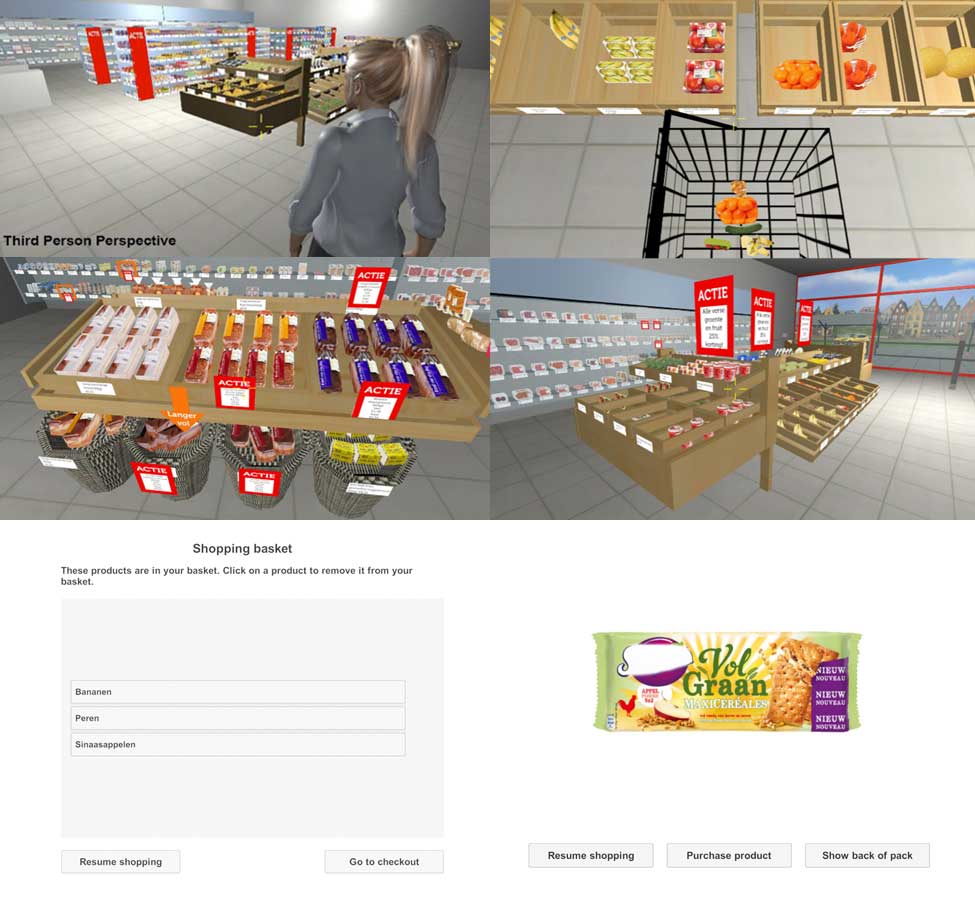
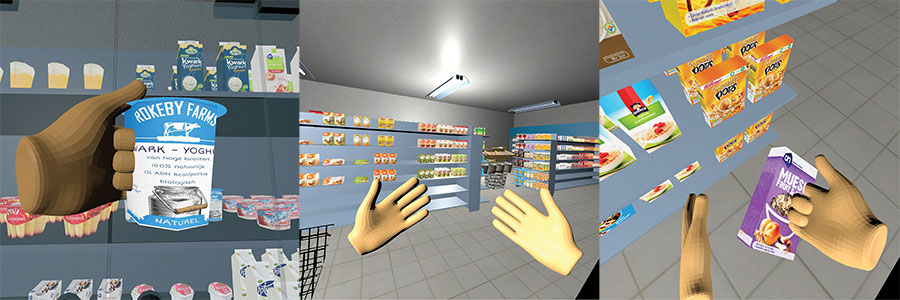
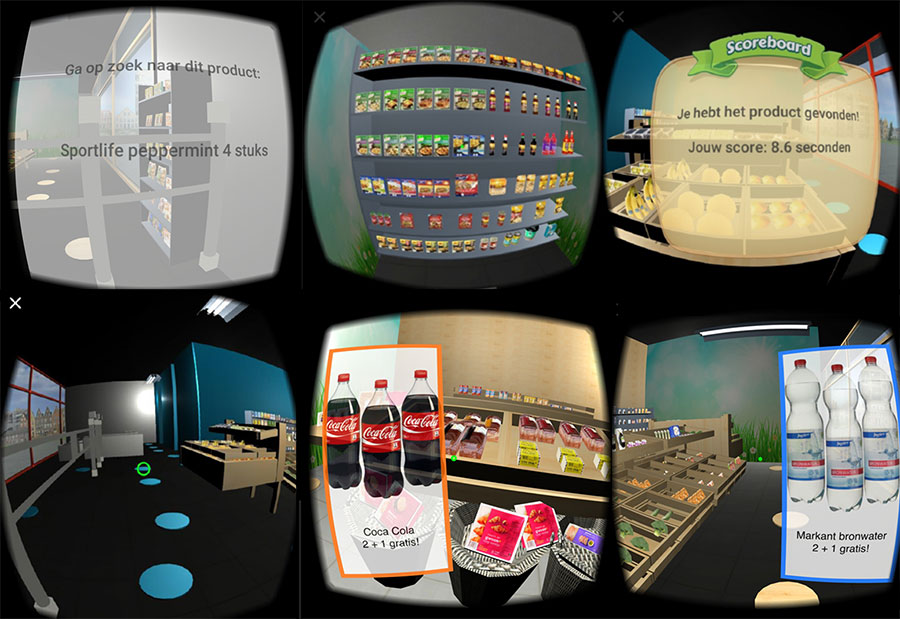
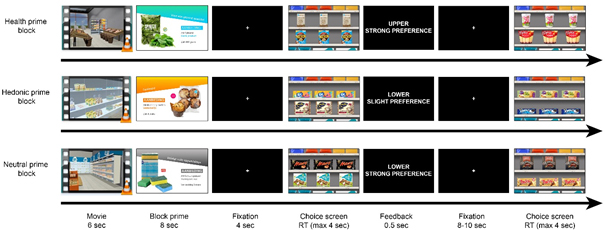
Collaborations
If you are interested in using the VirtuMart for your research or to collaborate in further developing the tool please do not hesitate to contact me. Currently, I am specifically looking for projects that would allow a major update and validation of the software.
Publications
The VirtuMart is used in several projects. Below a list of all publications (currently accepted and/or published) employing the VirtuMart can be found.
- Van der Laan, L. N., Papies, E. K., Ly, A., Smeets, P. A. M. (2022). Examining the neural correlates of goal priming with the NeuroShop, a novel virtual reality fMRI paradigm. Appetite, in press.
- Blom, S. S. A. H., Gillebaart, M., De Boer, F., van der Laan, L. N. & De Ridder, D. T. D. (2021). Under pressure: Nudging increases healthy food choice in a virtual reality supermarket, irrespective of system 1 reasoning. Appetite, 160. doi
- Hoenink, J. C., Mackenbach, J. D., Van Der Laan, L. N., Lakerveld, J., Waterlander, W. & Beulens, J. W. J. (2021). Recruitment of participants for a 3D virtual supermarket: Cross-sectional observational study. JMIR Formative Research, 5(2). doi
- Hoenink, J. C., Mackenbach, J. D., Waterlander, W., Lakerveld, J., Van Der Laan, N. & Beulens, J. W. J. (2020). The effects of nudging and pricing on healthy food purchasing behavior in a virtual supermarket setting: A randomized experiment. International Journal of Behavioral Nutrition and Physical Activity, 17(1). doi
- Meijers, M. H. C., Smit, E. S., de Wildt, K., Karvonen, S. G., van der Plas, D. & van der Laan, L. N. (2021). Stimulating Sustainable Food Choices Using Virtual Reality: Taking an Environmental vs Health Communication Perspective on Enhancing Response Efficacy Beliefs. Environmental Communication (in press). doi
- Smit, E. S., Meijers, M. H. C. & van der Laan, L. N. (2021). Using virtual reality to stimulate healthy and environmentally friendly food consumption among children: An interview study. International Journal of Environmental Research and Public Health, 18(3), 1–13. doi
- van der Molen, A. E. H., Hoenink, J. C., Mackenbach, J. D., Waterlander, W., Lakerveld, J. & Beulens, J. W. J. (2021). Are nudging and pricing strategies on food purchasing behaviors equally effective for all? Secondary analyses from the Supreme Nudge virtual supermarket study. Appetite, 167, 105655. doi
- Dissertation Jody Hoenink (2021). Healthy eating made easier - Nudging and pricing strategies to improve population diets - evidence on their effectiveness and equity. Defense date: 17-11-2021. Four chapters of the dissertation were based on data collected with the VirtuMart.
